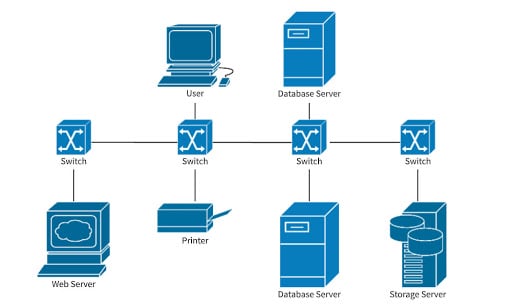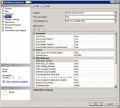- HubPages»
- Technology»
- Computers & Software»
- Computer Software
Creating A Server Database

Setting Up A Server
If you wish to line up your local testing server and are new server-side programming start with AMP which stands for Apache mySQL Server and PHP this is often the foremost common trio of web server database server application server you will find amp at the majority hosting companies and it's great it is a great foundation for server-side programming even better it is simple to line abreast of both Windows and Mac PC's.
For Windows WAMP may be a simpler installer that puts Apache mySQL Server and PHP on your computer it's free and works with Windows 7, 8, 10, Vista, and XP and you'll be able to find it at wampserver.com/EN. Because they alter somewhat frequently you will find instructions that match the changes to the WAMP installer at www.uptospeedguides.com/mamp.
For Macs, MAMP provides a straightforward thanks to getting Apache mySQL Server and PHP up and running MAMP is free and available from www.mamp.info the MAMP software changes as does its website frequently so ensure to urge the foremost up-to-date directions at up to speedguides.com/mamp. If you propose to follow together with the tutorials during this section download install WAMP or Mamp now. If you follow the previous instructions installed a testing center on your computer you've already visited a web page at either HTTP:/ Localhost or HTTP:/ /localhost slash MAMP the house pages for WAMP & MAMP respectively. You'll be wondering what's this local hosting? For computer localhost is simply otherwise of claiming to quote me.” after you instruct a browser to travel to HTTP simple:/ /localhost, you're merely telling it to appear for an internet server that's running on the identical computer because it is. Normally, once you visit a website, you'll see web an address like HTTP://www.google.com which sends you your browser out over the net searching for an online page located on some computer identified as www.google.com. After you created an online server on your computer, and you would like to look at the net pages you created there your browser needs look no further than your system, and its web server a period K. A period that testing server you founded earlier.
But once the browser asks your local testing server for an online page, where does the server find that page on your computer? Once you work with static web content just like the one you built earlier during this book, you'll keep your website files just about anywhere you want: on your desktop, in your documents folder, on an external drive, and so on.
Dynamic pages, on the opposite hand, work only with the assistance of an online server and its companions, the appliance in database servers. Because it's to coordinate the work of those machines, the web server expects files for a website to reside in an exceedingly particular location on your computer. That folder is named the positioning root folder you'll also hear it stated because of the document root folder. The precise name and placement of the positioning folder may vary from web hosting company to web hosting company which could name the folder htdocs, web docs, or public underscore HTML. WAMP uses a folder named www.asthesiteroot C: slash WAMP slash WWW as an example while MAMP uses a folder called htdocs; Head over to applications so MAMP so htdocs.
In the case of WAMP, if you would like to type HTTP: slash slash localhost slash my name underscore page dot HTML into your browser the browser requests a file named my underscore page dot HTML from the net page running on your computer. The server then looks inside C: backslash program files backslash WAMP backslash www.fourafilenamedmyunderscorepage.html; If it finds,s it, the server sends the file back to the browser. On a Mac running Mamp, the net server looks in an application, and so MAMP and so htdocs for the file my underscore page dot HTML.
Getting Started

MySQL
Creating A Server and Database and UI/UX Design
Creating a server creates a database that can store all your files code images and other data like usernames passwords comments and everything else associated with your website. Adobe Dreamweaver allows you to easily connect to the apache server which is php and other web stuff (web server), and MySQL server which is your actual database server for the website and will create a local database for the website, and after connecting Dreamweaver to the servers one can access your php files and use MySQL connection.
Once you have your database up and running you can allow for people to sign in to your account and be able to keep their information private and secure. And storing all this on a database will allow you to access someone’s password if they forgot and send them an email to change it or ask them a security question and send them a link to view their password if they don’t want to change it and to make it more secure make the link expire after a day or so it can’t be access by a malicious third party. You can also interact with your users and find out what they like and dislike through a survey or feedback on a service and find out what is working and what is not working with the user base or audience for your website which will help you to make your website more user friendly thus improving the UI/UX design.








